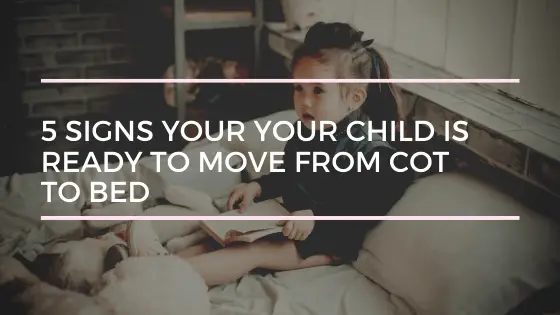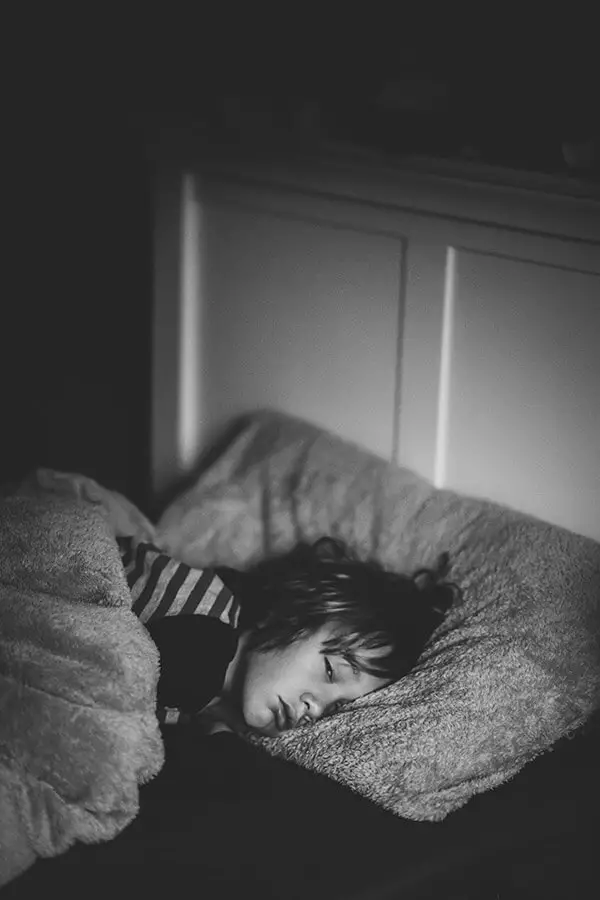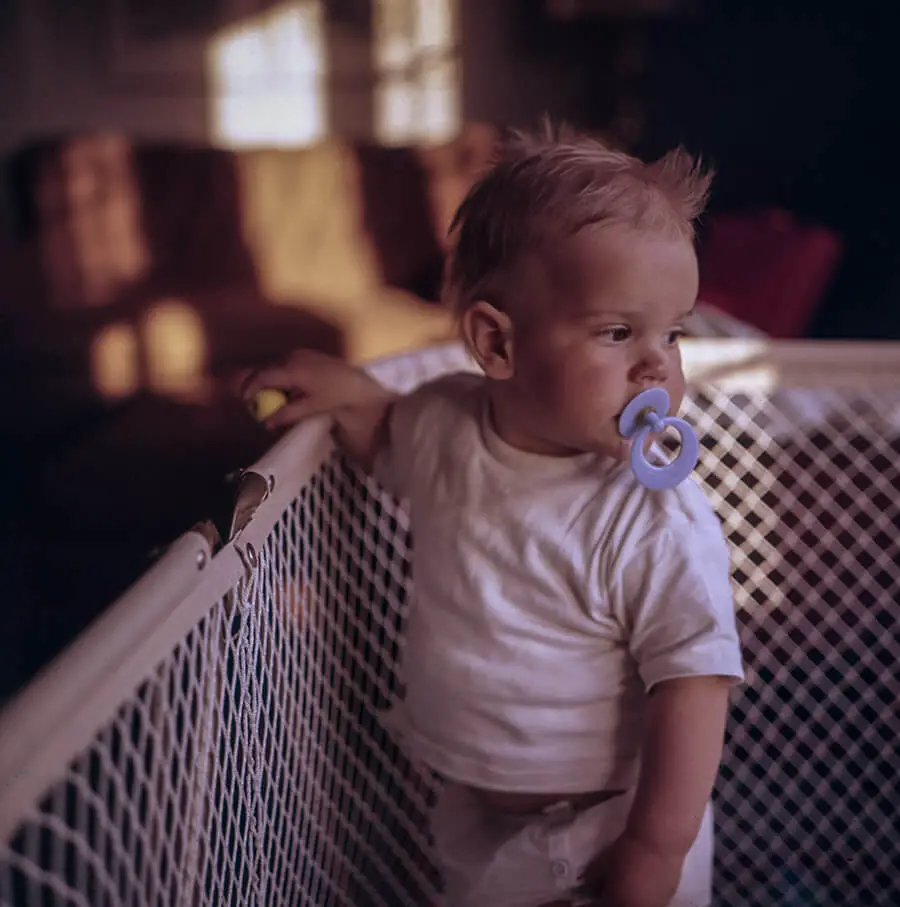Affiliate Disclosure – This post may contain affiliate links where we may receive compensation if you purchase products linked below. As an Amazon Associate, I can earn from qualifying purchases. This doesn’t cost you anything and helps keep our little blog running. Read our privacy policy for further information.
Like anything when it comes to babies and children, there’s no hard and fast rule to when they’ll begin doing something and the timing of milestones varies from child to child. Moving from a cot to bed is no different and can vary in children.
We created this list of signs your child is ready to move from a cot to a bed so you can be better informed of things to look out for. While also listing some tips on how you can best help with their transition from a cot to a bed all the while making their room safe for sleeping in a bed.
When Do Children Move From a Cot to a Bed?
Like we mentioned in the intro spill, there’s no hard and fast rule to when children move from a cot to a bed. Generally speaking, children transition around the age of 18 months to the age of 3 and a 1/2 years.
Don’t stress out too much if your child is still in a cot at the 3 and a 1/2 year mark. Hey! It must mean your child still fits in their cot which means you’ve been able to save money and not have to buy a bed yet!
5 Signs Your Child is Ready to Move From Their Crib to a Bed
Are you finding your child is asking where their bed is or perhaps they’ve worked out how to climb out of their cot? This is a sign that they’re ready to begin moving from their cot to a bed. We list 5 signs below on when your child is ready to move from a cot to a bed:
1. They Need to Goto The Bathroom Easily
If your little one is still sleeping in a cot and they’re now toilet trained, this can present its challenges especially if they need to go to the toilet during the night.
For your own sanity, it’s worth considering moving them from cot to bed so they can comfortably get up during the night and goto to the bathroom on their own. Sure, you might need to still get up and walk them to the bathroom but it’s less hassle putting them in a bed instead of a cot!
2. They’re OK When Not Supervised
Are you at a point with your child where you can step away from them to get something from another room and they’ll be OK unsupervised? One of the challenges of transitioning your child from cot to bed is the risk that they may get out of the bed during the night and have a tinker around in areas that they normally shouldn’t.
We chat about making your child’s bedroom safe later in the post but if you’re comfortable that your child won’t get up during the night and wander around their room playing with things is a good sign that they’re ready to begin transitioning.
3. They’ve Outgrown Their Cot
Is your child’s feet touching the end of their cot? We recommend considering moving them to a cot to a twin sized mattress thanks to the additional length you get.
Cot size mattresses are sized at around the 132 cm (52″) mark while a twin mattress is 190 cm (75″).
4. They’re Asking Where Their Bed Is
If you’re having conversations with your child about beds and where theres is, it’s a good time to capitalise on the moment and suggest that perhaps they have their own bed.
5. Climbing Out of Their Crib
Does your child think their spiderman and are trying to climb out of their cot on a regular basis? We recommend considering moving them from a cot to a bed for their own safety but also for your peace of mind when you’re in bed knowing that they are safe and sound.
How to Transition Your Child From a Crib to a Bed
Bit stuck on how you transition your child from a cot to bed? We created 7 tips below to help with moving your child way from using a cot and to a bed:
- Good bedtime routine – According to Raising Children Australia, they recommend setting up a good bedtime routine before transitioning to a bed. This helps with them feeling more relaxed when it comes to jumping into bed.
- Set up a mattress on the floor – Start by putting the mattress on the floor as you’ll have peace of mind during the night that your child is safe if they accidentally fall off while making it feel less daunting for your little one.
- Put the bed in the same position as the cot – If space permits, we recommend putting the bed in the same position as the cot as it’ll help with keeping things familiar for your child.
- Use the same blankets if possible – Similar to above, it’s great if you’re able to continue using some of the blankets that your child was previously using with their cot. This helps keep things familiar for them.
- Positive reinforcement – Along the journey of transitioning from cot to bed, it’s super important that you throw heaps of positive reinforcement towards your little one so they know their doing a good job and are more inclined to stick with the transition.
- Throw a ‘big kid party’ to celebrate them moving to a new bed – While we didn’t do this one ourself but if you have a child that’s stubborn and not keen to move from a cot to a bed, why not look to have a small party at home to celebrate your child transitioning? Maybe even get them a flashy bed like those that have a race car design like this one from Amazon.
- Let them choose their new bed – If they’re eager to move to a bed, take them along when shopping for a new bed and let them help with the buying process to empower them and make them feel involved in the process. Having them involved in the process will help with their attachment to the bed.
6 Tips to Make Your Child’s Bedroom Safe
Once you’ve worked out a plan to transition your child from crib to bed, it’s important to stop and work out how you’ll make their room safe. Making your child’s room safe is particularly important once they’re in a bed as there’s a potential for them to become mobile during the night as gone are the walls that a crib would previously provide. We’ve created this list of 6 tips to make your child’s bedroom safe below to help you with this process:
- Safety locks on windows – If your windows don’t have security locks on them, it’s important to install safety locks on your windows to stop your child from opening them during the night and accidentally getting stuck or out during the night.
- Keep blind cords out of reach – If your child’s room has cords to move blinds up and down then we’d recommend trying to place these in a place that’s out of touch for your child. These can be dangerous for children and unfortunately cause strangulation if they were to get tangled in it.
- User powerpoint covers – Like when your child first started crawling and walking, it’s important to pull out the powerpoint covers and get your child’s room’s powerpoints protected from them fiddling with them during the night.
- Use wall brackets to stop furniture falling – In case you haven’t already, it’s important to install safety anchors on furniture which essentially protect your baby from furniture toppling over if they hang on it. Most furniture comes with wall mounting anchor however if they don’t they are readily available off Amazon and similar websites for cheap.
- Use rails around the bed to stop them falling out – In the early stages of transitioning from a cot to a bed, we found having bumpers on our boys beds helped with keeping them safe from accidentally falling out.
- Keep toys etc away from the bed – Similar to sleeping in a cot, it’s important to remove anything that may potentially get on your child’s face during the night and cause suffocation. While it’s OK for your child to sleep with a comforter that helps them get to sleep, it’s important that you remove any unnecessary pillows or toys that aren’t needed.
Closing / Summary
We hope this guide on transitioning your child from cot to bed has been helpful!
From our experience transitioning our twin boys from cot to bed wasn’t without its hiccups but we got there eventually. Our best advice would be to persevere and continue to provide lots of positive reinforcement along the journey so your child knows they are doing a great job.
Thanks for reading!
Affiliate Disclosure – This post may contain affiliate links where we may receive compensation if you purchase products linked below. As an Amazon Associate, I can earn from qualifying purchases. This doesn’t cost you anything and helps keep our little blog running. Read our privacy policy for further information.

My name’s Alex and I’m a husband, dad to beautiful identical twin boys, cyclist, photographer and connoisseur of great coffee!
Help I’m Having Twins has been created for me to share what I found useful as a new parent and dad to twins.


